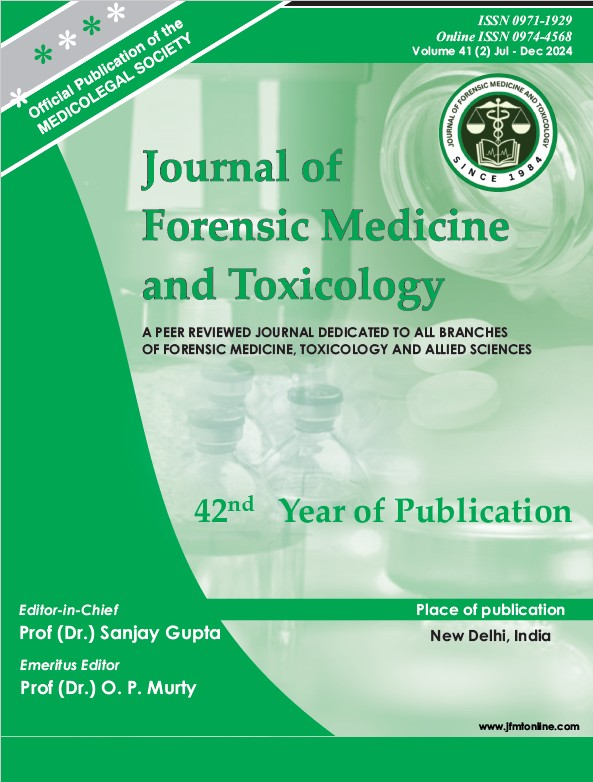DNA profiling strategies of heavily degraded human skeletal remains: Review of comparative significance of petrous bone, femur and molar teeth
DOI:
https://doi.org/10.48165/jfmt.2025.42.2.18Keywords:
Forensic genetics, ancient DNA, petrous, femur and teeth, identification, damaged human remainsAbstract
The identification of heavily challenged human remains retrieved in forensic anthropological scenarios is a difficult task. The extraction of sufficient amount of high molecular weight quality DNA from such remains, its sequencing and analy sis has greatly helped in their identification pursuits. Multiple factors affect DNA preservation in skeletal remains, partic ularly the type of bone and its anatomical positioning in human body. The literature search revealed that femur, petrous bone and molar teeth are preferable sources of ancient DNA for identification of heavily damaged human remains. Present review emphasizes the comparative importance of petrous bone, femur and molar teeth in ancient DNA research and lays a foundation for future investigations that may further unravel the complexities of forensic identification of unknown human remains. The petrous bone is a comparatively highly effective and reliable source for ancient DNA due to its distinct anatomical and structural properties. The unique value of petrous bone also enables researchers to delve deeper into historical populations, offering critical insights into the origins of humans and the evolutionary forces that have shaped our species over time.




